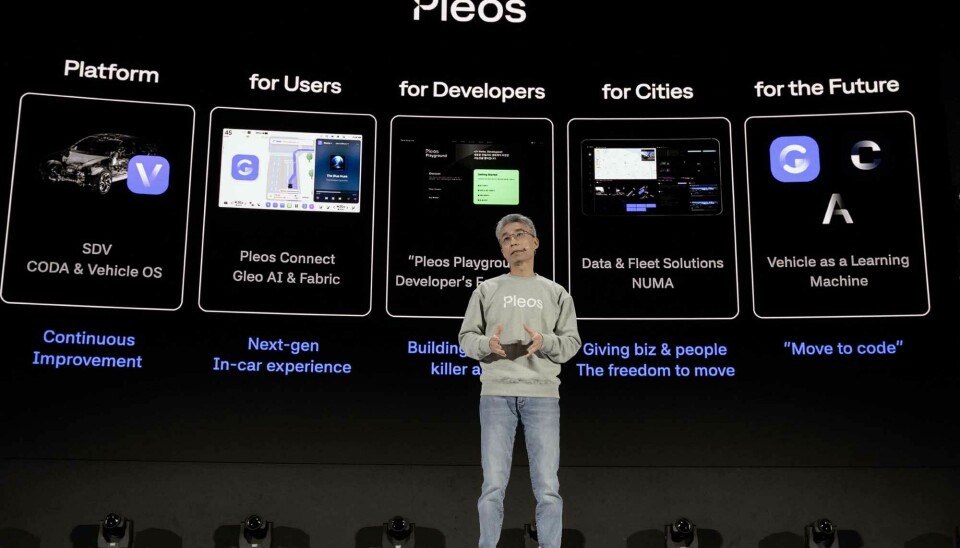Cloud Mobility as a Goal
Hyundai Launches Software Brand Pleos
Presentation in Seoul: Chang Song, President and Head of the Advanced Vehicle Platform (AVP) Division at Kia and Hyundai Motor, presents Pleos to the audience.
Hyundai Motor Group
At its in-house developer conference in Seoul, the Hyundai Group introduced its new mobility and software brand 'Pleos'. The Koreans also explained how they plan to improve the in-vehicle app network in collaboration with partners in the future.
Chang Song, President and Head of the Advanced Vehicle Platform (AVP) Division at Kia and Hyundai Motor, presented the new software brand and technology platform of the group to the public in Seoul and emphasized: "In the rapidly changing automotive industry, the Hyundai Motor Group has been dedicated to the development of software-defined vehicles (SDV) since 2023."
According to him, the group's goal is to achieve "Cloud Mobility," where all forms of mobility are connected through software in the cloud and continuously evolve. Pleos serves to create a network that extends from individual vehicles to fleets, from hardware to software, and finally across entire mobility infrastructures and cities.
How does Pleos work?
The word is composed of the Greek "pleo" ("more") and the abbreviation "OS" for Operating System. Pleos is understood as a mobility software platform that supports all mobile devices in acting autonomously and being intelligently managed. It connects transport and infrastructure, including vehicles. The end-to-end software platform integrates high-performance chips and controllers, the Vehicle Operating System (Vehicle OS), the infotainment system (Pleos Connect), fleet management, cloud infrastructure, and solutions for optimizing mobility and logistics.
According to the provider, Pleos enables a range of intelligent mobility functions such as autonomous driving, vehicle connectivity, real-time data analysis, and optimised route planning. These aspects are intended to form the basis for improving the user experience and maximising the efficiency of urban mobility operations.
Deployment in over 20 million vehicles planned
To create a software-centric mobility environment, the Hyundai Group is focusing on developments in E/E architecture regarding SDVs, as well as the development of a proprietary vehicle operating system and Pleos Connect. This new infotainment system is to be introduced in the second quarter of 2026 and deployed in more than 20 million vehicles by 2030. These advances are intended to make vehicles efficient and flexible software platforms, as well as improve connectivity between vehicles and infrastructure.
The Pleos package also includes the open development platform Pleos Playground. This allows third-party providers to freely access the endpoints of automotive software in the development of mobile applications - from vehicles, cloud, analytics, and accessories.
What else is Hyundai promising?
At the developer conference in Seoul, the “Next Urban Mobility Alliance” (NUMA) was also introduced. This aims to realise a cloud-based mobility vision by establishing a framework for public-private partnerships to network and optimise movements in an autonomous transport environment. As part of the collaboration, NUMA addresses social issues such as mobility rights, regional depopulation, and the climate crisis.
Global partners have announced their participation in creating a seamless user experience that connects vehicles and mobile devices via Pleos Connect and Pleos Playground, as well as their own app store. These include Samsung Electronics, Google, Naver, Socar, and Unity.
Roadmap to Level 2+ Autonomous Driving
The Hyundai Group also aims to implement Level 2+ (L2+) autonomous driving by the end of 2027. The Level 2+ system recognises the vehicle's environment using cameras and radar and makes more complex decisions based on deep learning.
The Korean company intends to continuously optimise AI model efficiency through lightweight construction. Additionally, training efficiency and performance are to be improved through the use of vehicle-optimised neural processing units. In this way, the group aims to make its vehicles self-learning and constantly evolving “learning machines.”
But it's not just in the Far East that the industry is on the move; something is also happening in Northern Europe. While Volvo equips the XC90 with modern infotainment integration and proven driver assistance systems, the Swedes have created a technological advancement with a new software architecture with the all-electric EX90.
This article was first published at automotiveit.eu



























